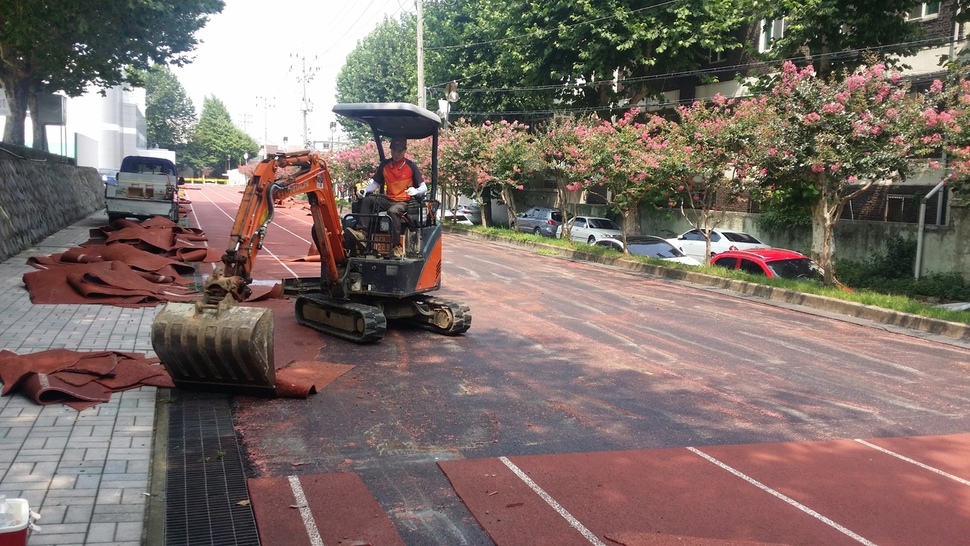 |
|
Work on replacing the urethane covering on the track at Daegu Civic Stadium started on Aug. 9. The urethane track was found to have heavy metal concentrations 30-times higher than the accepted level. (provided by Daegu Metropolitan Government)
|
Change comes in response to Hankyoreh reporting that found harmful covering was replaced with yet more urethane
Ongoing concerns about the harmful effects of urethane ground covering on the athletic fields of schools in Seoul have prompted authorities to have the urethane replaced with a type of natural sandy soil. When tests revealed that the urethane ground surfaces on school athletic fields contain harmfully excessive amounts of heavy metals, the Seoul Metropolitan Office of Education decided to have them resurfaced with eco-friendly urethane. However, it was discovered that even this supposedly environmentally friendly type of urethane may also have harmful effects, so on Aug. 12, the Office of Education announced a revised decision to use a type of natural sandy soil called masato in Korean. After inspections by the Office of Education, certain facilities whose structure makes the use of urethane unavoidable and schools that specialize in athletics may be allowed to use urethane covering. When excessive heavy metals were found during two investigations, the education office called an emergency meeting of the principals and supervisors of 102 schools that were hoping to get the new urethane ground covering. The pros and cons of masato and urethane were explained, and the decision was made on the basis of the opinions gathered there. This is the result of a report carried in the Hankyoreh on July 26 which criticized the schools and the Office of Education for deciding to replace urethane containing lead with yet more urethane. Currently, physical education facilities at schools are tested on the basis of KS specifications for four heavy metals (lead, mercury, cadmium, and hexavalent chromium), but the Korean Agency for Technology and Standards is working to have the law changed to include phthalates, potential endocrine disruptors found in some environments. If phthalates are included, then the new “eco-friendly” urethane will also come under criticism for its potential harmfulness. The Office of Education’s policy is to provide budget assistance to the schools that are switching to masato and to get rid of the questionable urethane from the schools that still have it. In the second survey to gauge schools’ demands last month, the education office decided to provide funding to 26 schools that have chosen to go with masato. Together with a research team at Seoul National University’s College of Civil and Environmental Engineering, the Office of Education has developed an environmentally friendly form of masato that provides better drainage and reduces dustiness. A source at the Office of Education said, “We hope to replace harmful urethane at physical education facilities in a timely fashion, using eco-friendly masato, to provide safe and healthy conditions for physical education.” By Kim Mee-hyang, staff reporter Please direct questions or comments to [english@hani.co.kr]